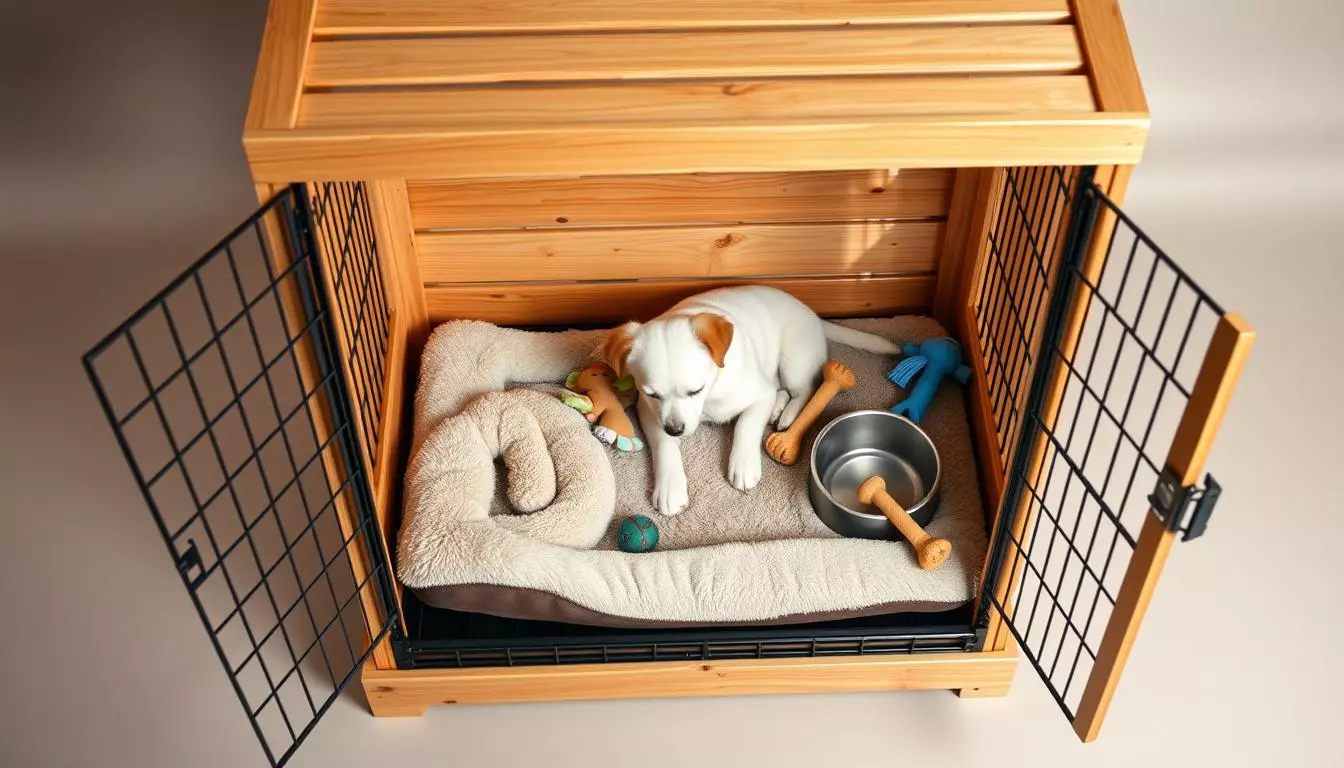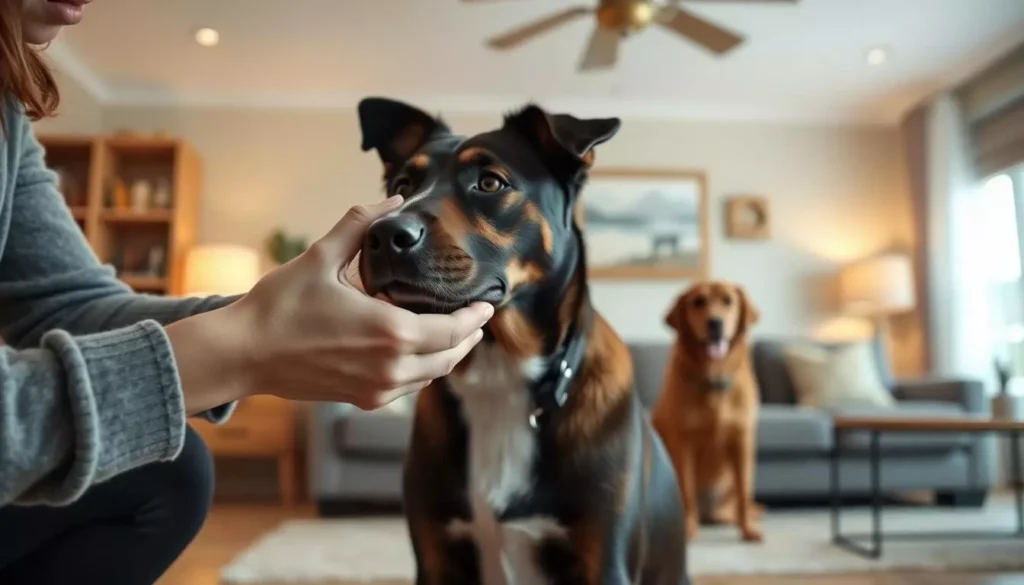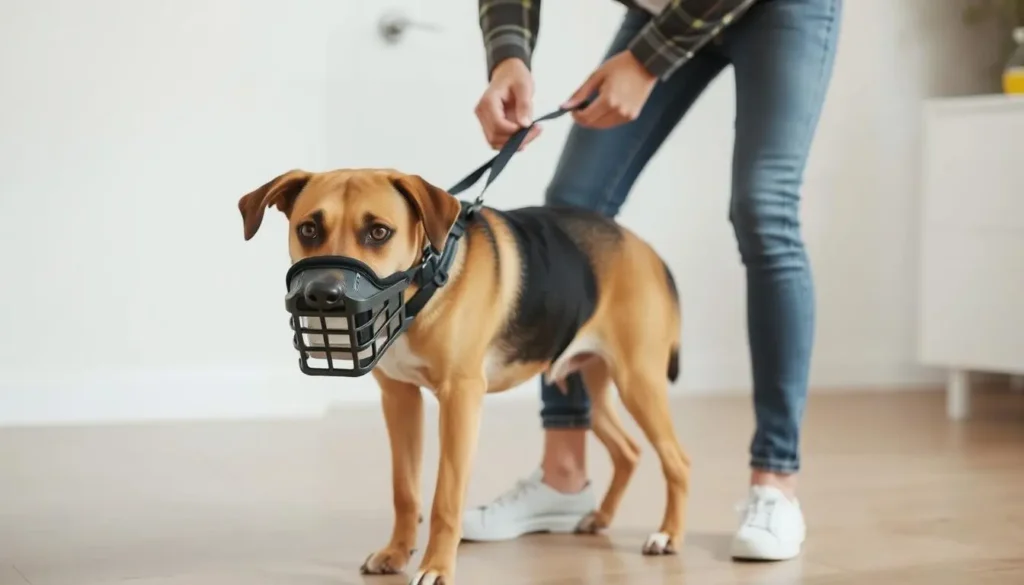Welcoming a dog into your home is filled with challenges and joys. Crate training has been a game-changer for me, making my dog feel secure and well-behaved. The first time I introduced my puppy to the crate, I felt their curiosity and fear.
But, I soon realized the crate was more than just a place to keep them. It became a safe space that helped my dog feel secure and established a routine.
This guide will help you crate train your dog with kindness and understanding. Crate training improves your dog's behavior and gives you peace of mind. It shows how crate training is more than just a place for your dog.
We'll explore how to make crate training a positive experience for both you and your dog.
Key Takeaways
- Crate training creates a secure environment for your dog.
- A well-trained dog offers more peace of mind for owners.
- Establishing a crate training routine helps structure your dog's day.
- Understand the different crate types to find the best fit for your dog.
- Positive reinforcement is crucial during the crate training process.
- Monitoring your dog's comfort level is essential for successful crate training.
Understanding the Importance of Crate Training
Crate training is key because it meets a dog's instinct to have a safe spot. Dogs, being den animals, find comfort in a crate. This training helps with dog behavior, reducing anxiety and stopping destructive acts. It gives them a place to feel safe and stable.
It's good for both the dog and the owner. Crate training makes house training easier because dogs don't want to mess their sleeping area. It helps my dog learn good habits and routines. It also helps with separation anxiety, making my pet feel better when I'm away.
It's important to make the crate a positive place for your dog. If they see the crate as a den, they'll feel secure. This makes crate training a positive experience, improving the bond between you and your pet.
| Crate Training Benefits | Impact on Dog Behavior |
|---|---|
| Establishes a safe haven | Reduced anxiety during stressful situations |
| Aids in house training | Encourages potty training success |
| Prevents destructive behavior | Lowers the risk of property damage |
| Facilitates travel | Makes journeys less stressful for the dog |
What is Crate Training?
Crate training is key for dog owners to build a strong bond with their pets. It teaches dogs to view the crate as a safe, cozy spot. This is not about punishment but about creating a place for them to relax and feel safe.
Grasping dog crate concepts is essential for successful training. Dogs naturally seek small, enclosed areas for rest. By introducing a crate, I meet their instinctual needs. This approach helps with house training and prevents destructive behavior caused by boredom or anxiety.

Benefits of Using a Crate for Your Dog
Crate training has many benefits for dogs and their owners. It gives dogs a safe place to relax. This helps reduce stress and help with dog anxiety, making them feel more at ease.
A crate also helps with housebreaking. It acts like a natural den, helping dogs hold their bladder until they can go outside. This makes house training easier.
Using a crate can also stop destructive behavior when you're away. It keeps your dog safe from chewing on furniture or getting into trouble. These crate training advantages make your home a happier place.
Crate training is also great for travel or vet visits. A familiar crate can comfort and calm your dog in stressful situations. It helps make transitions smoother and less scary for them.
Selecting the Right Crate for Your Dog
Choosing the best crate is key for your dog's comfort and safety. It's important to look at the different types of dog crates. A good crate helps with training and becomes a cozy spot for your pet.
Types of Crates: Wire, Plastic, and Soft Crates
Each crate type has its own benefits for different needs:
- Wire Crates: These crates are great for dogs that like to watch their surroundings. They are also easy to fold up for storage and travel.
- Plastic Crates: These crates give a sense of security. They are good for travel because they meet airline rules.
- Soft Crates: Soft crates are light and easy to carry. They're good for short trips or events, but not for dogs that chew or dig.
Choosing the Correct Size for Your Dog
Finding the right crate size is important for a good experience. A crate that's too big can lead to bad habits. The right size lets your dog stand, turn, and lie down easily. Here's how to pick the right size:
| Dog Breed | Recommended Crate Size (Length x Width x Height) |
|---|---|
| Small Breeds (e.g., Dachshund) | 24" x 18" x 19" |
| Medium Breeds (e.g., Bulldog) | 30" x 21" x 24" |
| Large Breeds (e.g., Labrador) | 36" x 24" x 28" |
| Extra Large Breeds (e.g., Great Dane) | 48" x 30" x 32" |
For puppies, get a crate with adjustable dividers. This way, the crate can grow with your dog, fitting well at every stage.
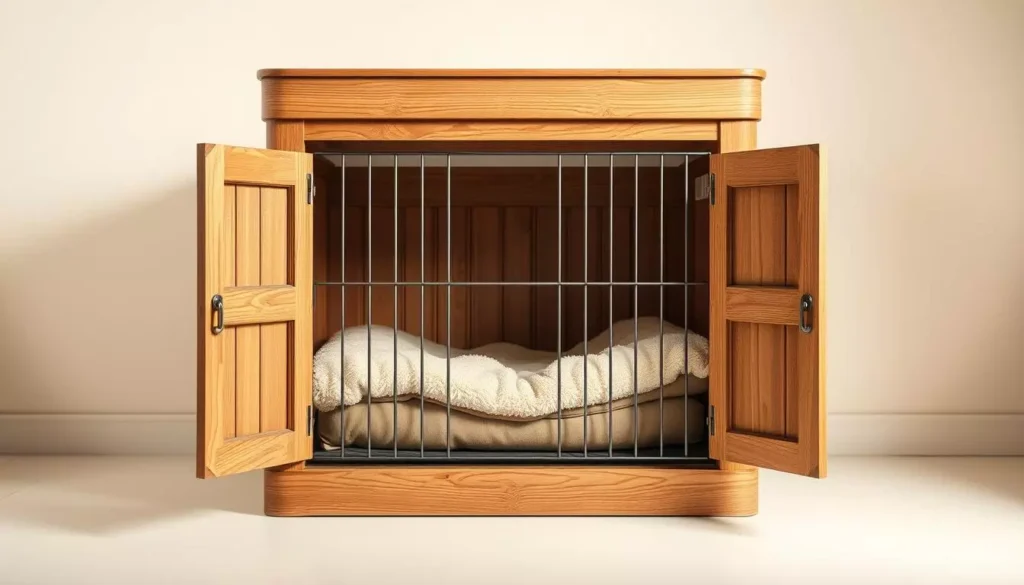
Preparing Your Dog for Crate Training
Preparing for crate training needs careful planning and a gentle touch. It's important to make the crate a safe and welcoming space for your dog. This way, they'll feel more comfortable and willing to use it.
Creating a Positive Association with the Crate
Begin by making the crate a fun place. Use your dog's favorite treats and toys to draw them in. This positive start helps them see the crate as a good thing.
Also, keep the crate door open at first. This lets your dog go in and out whenever they want. It helps them feel less trapped.
How to Acclimate Your Dog to the Crate
Introduce your dog to the crate slowly and calmly. Start by leaving the door open for a bit. This lets them explore at their own speed.
Give them treats for showing interest. This makes them feel more at ease. As they get used to it, you can close the door for a bit longer. Always give praise and treats to keep the experience positive.
Establishing a Crate Training Routine
Creating a dependable crate training routine is key for dog owners. A consistent approach helps dogs understand their schedule and improves behavior. By setting a crate schedule, my dog quickly got used to being in the crate.
Regular times for crating, feeding, and play made a big difference. Predictability makes them feel secure. They know when they'll be in their crate and when to expect other activities. For example, I set up a routine like this:
| Time | Activity |
|---|---|
| 7:00 AM | Feeding |
| 8:00 AM | Outdoor play |
| 9:00 AM | Crate time |
| 12:00 PM | Feeding |
| 1:00 PM | Outdoor play |
| 2:00 PM | Crate time |
Following this routine made my dog more comfortable in the crate. I saw a big change in their behavior. This made me sure that crate training was the right choice. A reliable schedule helps create a peaceful home for both of us.
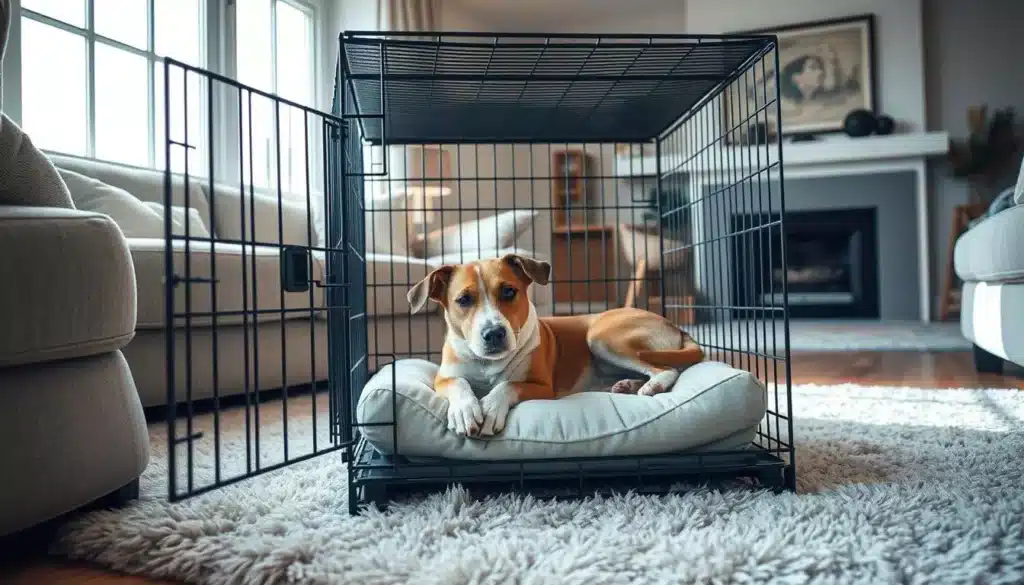
Training Dog Crate: Step-by-Step Method
Crate training is key to creating a safe space for my dog. It helps them feel secure. I start by making the crate a positive place, showing it's safe and comfy.
I put the crate in a spot my dog likes. I use treats and toys to get them curious. The door is open at first, so they can explore without feeling trapped.
Then, I start closing the door for short times. I use positive training methods and go slow. This helps my dog feel okay with being in the crate.
Next, I want my dog to relax in the crate for longer. I might feed them there. This shows the crate is a good place for them.
As they get used to it, I increase the time they spend in the crate. This builds their confidence and strengthens our bond. Each step forward is a success.
Watching my dog's body language is crucial. If they seem stressed, like whining or pacing, I slow down. My dedication to crate training will make a safe space for my dog.
Common Challenges in Crate Training
Crate training has many benefits, but it also has challenges. I've faced issues like dog whining and crate aggression. These problems can make training harder. But, knowing how to deal with them can make training easier for both the dog and me.
What to Do If Your Dog Whines in the Crate
Dealing with dog whining can be tough. But, it's important to know how to handle it. First, figure out why your dog is whining. They might be uncomfortable, anxious, or just want attention.
I wait for a calm moment before giving my dog treats or attention. This helps them learn to be quiet. Making the crate a comfortable place can also help.
Addressing Crate Aggression in Dogs
Crate aggression is another big challenge. It can come from fear or anxiety about being in the crate. I've found that positive reinforcement is key.
Instead of punishing, I focus on making the crate a positive place. I use treats and toys to help my dog feel better. This makes them less stressed and more relaxed over time. Knowing what triggers aggression helps prevent it in the future.
Crate Training a Puppy at Night
Nighttime crate training can be tough for many owners. Creating a good routine helps both the puppy and me. A structured approach to crate training at night makes the puppy feel safe and cozy.
To make crate training better, I focus on setting good habits for nighttime. This makes the experience better and more useful.
Regulating Nighttime Crate Habits
Keeping the crate close to my bed is crucial. It makes the puppy feel safe and connected. This setup lets me quickly respond to any nighttime needs.
It's also key to make the crate comfy. A cozy bed inside the crate makes it inviting for the puppy.
Creating a bedtime routine helps the puppy sleep better. Here are some tips:
- Take the puppy out right before bed to encourage emptying their bladder.
- Use calming techniques, such as gentle petting or soothing voices to help the puppy settle.
- Limit food and water intake a few hours before bedtime to minimize disruptions during the night.
By sticking to these habits, the puppy gets more comfortable with the crate at night. This routine not only helps with crate training but also makes for a peaceful sleep for everyone.
Extending Crate Time: When and How
When I start to extend crate time, I must think carefully about when to do it. It's important to watch my dog's comfort to avoid stress or anxiety. I pay close attention to how they react, making sure they stay comfortable as the crate time grows.
Extending crate time is a step-by-step process. I start by adding small amounts of time. For example, if they can handle an hour, I might add 15 minutes. This slow increase helps them adjust without feeling stressed. Watching their behavior helps me see how they're doing.
Understanding Your Dog’s Limits
Knowing when your dog is too uncomfortable is key during training. If they whine or drool a lot, it's a sign they're not okay. To keep them happy and relaxed, I give them toys and treats. These keep them busy and make the crate a fun place.
- Choose durable toys that withstand extended play.
- Incorporate puzzle toys filled with treats for mental stimulation.
- Rotate toys regularly to maintain interest and curiosity.
Being patient is crucial when extending crate time. Knowing when to increase it and keeping an eye on my dog's comfort ensures a good experience for both of us.
Monitoring Your Dog While Crate Training
Effective monitoring is key when crate training my dog. Tools for monitoring crate training dog behavior show how my pet adjusts to their new space. A crate camera helps me see my dog's stress levels and comfort in their crate.
When I watch my dog, I look for signs of comfort or discomfort. A relaxed posture or light snoozing means they're okay. But barking, whining, or pacing might show they're anxious. Knowing these signs helps me change my training to better suit them.
Here are key points to consider when monitoring:
- Set up the crate camera in a position that captures the crate area clearly.
- Observe your dog regularly to track any changes in behavior over time.
- Take notes on your observations to identify patterns or triggers of anxiety.
Using a crate camera has changed how I crate train, making it better for my dog's comfort and well-being. The insights from monitoring improve the training, making my dog happier and more secure.
Frequent Issues with Crate Training
Many dog owners face challenges during crate training. These problems often come from unexpected behaviors. For example, a dog might suddenly dislike the crate or refuse to leave it. To solve these issues, it's important to understand why your dog is acting this way. You also need to stay consistent and patient.
Dealing with Dogs Who Suddenly Hate the Crate
If your dog suddenly hates the crate, look for reasons why. It could be a bad experience in the crate, loud noises, or changes at home. Here are some tips to help:
- Gradually make the crate a safe and welcoming place again.
- Use treats and positive feedback to encourage your dog to go into the crate.
- Keep the area around the crate calm to make it a relaxing spot.
Addressing Dogs That Won't Come Out of the Crate
Some dogs don't want to leave the crate, causing frustration. This could be due to anxiety or a need for safety. To help, use gentle methods that show respect:
- Use treats or toys to lure your dog out of the crate.
- Don't force them out, as this can make things worse.
- Call your dog out calmly and praise them when they come.
Is Crate Training Suitable Every Night?
Thinking about crate training every night makes me consider several factors. The dog's breed, age, and how anxious they are are key. Some dogs love being in a crate, while others might feel trapped and stressed.
I ask myself, is it okay to crate a dog every night? Too much crate time can make dogs dislike their crate. It's important to find a balance between crate time and play outside.
It's important to make sure dogs don't spend too long in their crate. Here are some things to think about when adding crate time to your dog's night:
- Check if your dog is okay with being in a crate every night.
- Watch for signs of stress or anxiety when they're in their crate.
- Make sure to spend quality time together outside of the crate.
- Adjust the crate time based on what your dog needs.
By keeping these tips in mind, I can make sure my dog feels safe and happy. Crate training every night can actually bring us closer together.
| Factor | Considerations |
|---|---|
| Breed | Some breeds may adapt better to nightly crate use. |
| Age | Puppies require more frequent breaks compared to adult dogs. |
| Anxiety Levels | High anxiety dogs may struggle with being crated every night. |
| Duration | Limit crate time to avoid distress; focus on positive associations. |
Conclusion
In wrapping up this guide on crate training, I want to stress the need for patience and understanding. A good crate training conclusion shows how it can shape your dog's behavior. It improves their life and makes your home peaceful.
The summary of crate training shows its benefits go beyond just keeping your dog in a box. It helps your dog feel secure, reduces anxiety, and teaches good habits. It's about making the crate a positive place and sticking to a routine.
Reflecting on crate training, I urge you to try the strategies from this guide. Crate training is a long-term effort to raise a happy, well-adjusted dog. Enjoy watching your dog grow in comfort and security.

